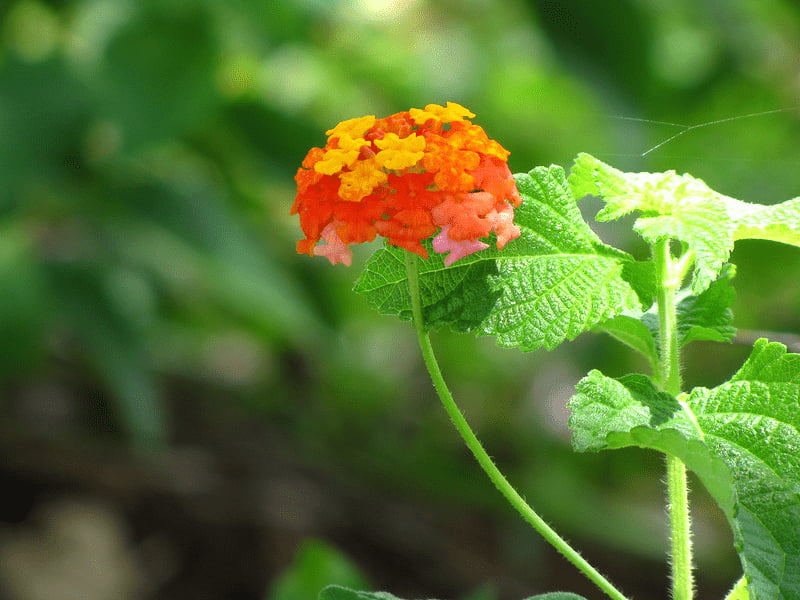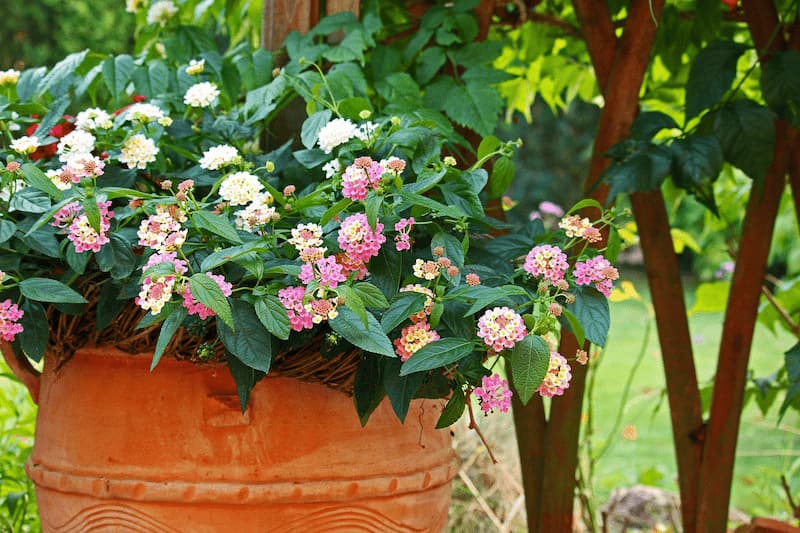How can one not appreciate the lantana with its spectacular flowering of colourful umbels that evolve as they bloom from red to pink, passing through white, yellow, and orange? An evergreen bush in mild climates, the lantana offers its multicoloured palette almost all year round. Because it is frost-sensitive and cannot withstand freezing temperatures, it is grown as an annual plant elsewhere. Another asset of the lantana lies in its evergreen, aromatic foliage that releases fragrance when crushed between fingers. Not fussy about soil and highly drought-resistant, the lantana has only one requirement: a spot in full sun.
If you wish to propagate this bush to create a beautiful flower bed or share with neighbours, the best method is propagation by cuttings. Follow our advice to successfully take lantana cuttings.
Equipment Needed for Lantana Propagation by Cuttings
- A secateurs with perfectly sharpened and disinfected blades;
- A rooting activator, willow water (optional);
- An alveolate tray, conventional buckets, or biodegradable pots, or terracotta pots;
- Potting compost for sowing or propagation by cuttings;
- Sand;
- A spray bottle;
- A cloche, a mini greenhouse, a cut plastic bottle, or a simple plastic bag;
- A pen.
When to Take Lantana Cuttings?
There are two ideal periods for taking lantana cuttings: either in early spring or late summer. If you take cuttings around March, when growth resumes, the lantana will have green, tender shoots.

To propagate lantana, take a young, flowerless shoot
You can also take lantana cuttings at the end of August. At this time, the stems will be semi-hardened, meaning woody and thus tougher.
Steps for Taking Lantana Cuttings
- Prepare the substrate in your chosen container to receive the lantana cuttings. Mix two-thirds potting compost for cuttings or sowing with one-third sand.
- Lightly moisten the substrate with the spray bottle.
- Using your secateurs, take 8–15 cm green shoots or semi-hardened stems without flowers.
- Remove the lower leaves, keeping only two leaves at the top of the stem, which you may cut in half.
- Dip the stems in rooting activator, willow water, or plant hormone. Shake off excess. This step is optional.
- Use the pen to make small holes about 5 cm deep, spaced 10–15 cm apart.
- Place each cutting in a hole, firming the compost-sand mixture around it.
- Water lightly at the base of the cuttings with the spray bottle.
To ensure optimal growth, lantana cuttings should be placed in a humid environment. Cover them with a plastic bag, glass cloche, or upturned bottle to maintain a warm, moist atmosphere. Ventilate occasionally to prevent condensation and rotting.
What Next?
Place the container in bright light, but never direct sunlight, at around 20 °C. Water regularly but sparingly. The substrate should remain moist.
After two to three weeks, new leaves will appear. You can then remove the plastic covering.
After two or three months, the cuttings will have rooted. It’s time to repot them in potting compost. Continue monitoring moisture levels. In winter, place the pots in a bright spot at 10–12 °C, watering less frequently.
Come spring, you can plant your lantanas outdoors if the climate permits. A frost cloth may be needed at night.
In cooler regions, grow lantanas in pots to brighten your garden, balcony, or terrace. Bring them indoors to a conservatory or naturally lit but unheated room when autumn night temperatures drop to around 2°C.

In cooler climates, lantanas are grown in pots or as annual plants
































Comments